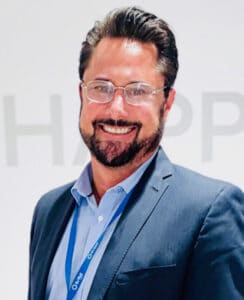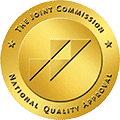Painkillers are medications that are used to treat moderate to severe pain. These types of medications can be addictive. If a person abuses or misuses their prescription, it will lead to dependency and withdrawal symptoms.
Because painkillers are so addictive, many times the user must attend inpatient rehab to detox from the substance and receive treatment to break the negative cycle of addiction.
Painkiller addiction can be treated with:
Rehab programs usually include the following therapies:
Doctors generally treat painkiller addictions by prescribing certain drugs that smooth out the patient’s withdrawal symptoms and reduce cravings. Other medications, such as methadone and buprenorphine, can help people withdraw from painkillers addiction.
These medications are opioid substitutes because they take the place of the addictive drugs in a person’s body.
The primary cause of prescription painkiller addiction is the over-prescription of drugs. Because painkillers can become addictive, doctors try not to prescribe them for long periods. When someone takes painkillers for an extended period of time, they can become addicted.
Many patients will make their symptoms sound worse to doctors or buy them illegally from friends or dealers to continue using them after their prescription runs out, because they aren’t able to go to detox and come off the drugs.
If a person does not have access to their prescribed dosage and they experience withdrawal symptoms, they may abuse prescription painkillers and develop an addiction.
Due to the high cost of these drugs, people who come from low-income areas may resort to illegal means. Purchasing them from someone with a prescription, stealing them, or buying on the street are the most common methods.
People who abuse prescription painkillers often feel that the risk is worth it because they are getting relief from their physical pain as well as receiving a sense of euphoria that comes with abusing drugs.
Services that deal with painkiller addiction generally include a hospital stay, outpatient counseling sessions, or support groups.
Opiate detox and painkiller detox is a level of care where the person suffering from substance abuse disorder goes through the medical process of detoxification.
It generally takes 3-7 days for the substances to leave the individual’s body. There are mental and physical withdrawal symptoms associated with painkiller detox so it helps to be in a medical facility during this time.
Inpatient rehab is an option for painkiller addiction. Inpatient rehab provides 24-hour supervision and care for people who may be experiencing withdrawal symptoms.
Inpatient programs consist of detoxification services and behavioral therapy sessions that will help the person to overcome their addiction.
Outpatient treatment for painkiller addiction is less intense than inpatient programs, but the person will still need to commit to attending outpatient sessions regularly.
Support groups provide a group of peers who can relate to each other’s struggles and provide an environment where those individuals can recover. Alcoholics Anonymous and Narcotics Anonymous are examples of peer support groups for painkiller addiction.
There are evidenced based therapies that have proven to be successful in painkiller treatment & Rehab. Some of the most widely accepted therpuetic approaches to treating painkiller addiction are as follows:
There are many treatment options to choose from, but research suggests the most effective form of treatment for Opiate addiction is a residential inpatient medical detox program followed by inpatient rehab and then intensive outpatient coupled with continued group therapy and medication assistance when transitioning back to regular life.
Inpatient rehab centers have specialized programs for individuals suffering from this type of substance use disorder. These programs help patients dig deep within themselves to uncover the root cause of their drug use.
Knowing what caused patients to use drugs or alcohol in the first place will help prevent future triggers while in recovery.
Get confidential help 24/7. Call now for:
Related Articles
Get Help Now
Ling, W., Nadipelli, V. R., Aldridge, A. P., Ronquest, N. A., Solem, C. T., Chilcoat, H., Albright, V., Johnson, C., Learned, S. M., Mehra, V., & Heidbreder, C. (2020). Recovery from opioid use disorder (OUD) after monthly long-acting buprenorphine treatment: 12-month longitudinal outcomes from recover, an observational study. Journal of Addiction Medicine, 14(5).
Arkes, J., & Iguchi, M. Y. (2008). How predictors of prescription drug abuse vary by age. Journal of Drug Issues, 38(4), 1027–1043.
Compton, W. M., & Volkow, N. D. (2006). Major increases in opioid analgesic abuse in the United States: Concerns and Strategies. Drug and Alcohol Dependence, 81(2), 103–107.
Lankenau, S. E., Teti, M., Silva, K., Bloom, J. J., Harocopos, A., & Treese, M. (2012). Initiation into prescription opioid misuse amongst young injection drug users. International Journal of Drug Policy, 23(1), 37–44.
Medical Advice Disclaimer
Magnified Health Systems aims to improve the quality of life for people struggling with substance use or mental health disorder with fact-based content about the nature of behavioral health conditions, treatment options and their related outcomes. We publish material that is researched, cited, edited and reviewed by licensed medical professionals. The information we provide is not intended to be a substitute for professional medical advice, diagnosis or treatment. It should not be used in place of the advice of your physician or other qualified healthcare providers.

Dr. Bickley graduated from U.C. Irvine with honors: Phi Beta Kappa, Golden Key International Honor Society, Cum Laude. He has been featured on national radio and print media. He is also a frequent lecturer at National Conferences. He holds an A.S. degree in Drug & Alcohol Studies, and two B.A. degrees in Criminology & Psychology, and masters and doctoral degree in Clinical Psychology. He is a licensed California Drug & Alcohol Counselor Level II, a licensed Clinical Supervisor and is certified in treating Eating Disorders.
Call Us Now, Our Admissions Team Is Standing By And Available 24/7.

Head Office Location:
1530 N Federal Hwy Lake Worth, FL 33460
Contact & Feedback:

We are here for you.
We are here for you, Call us and get started!
